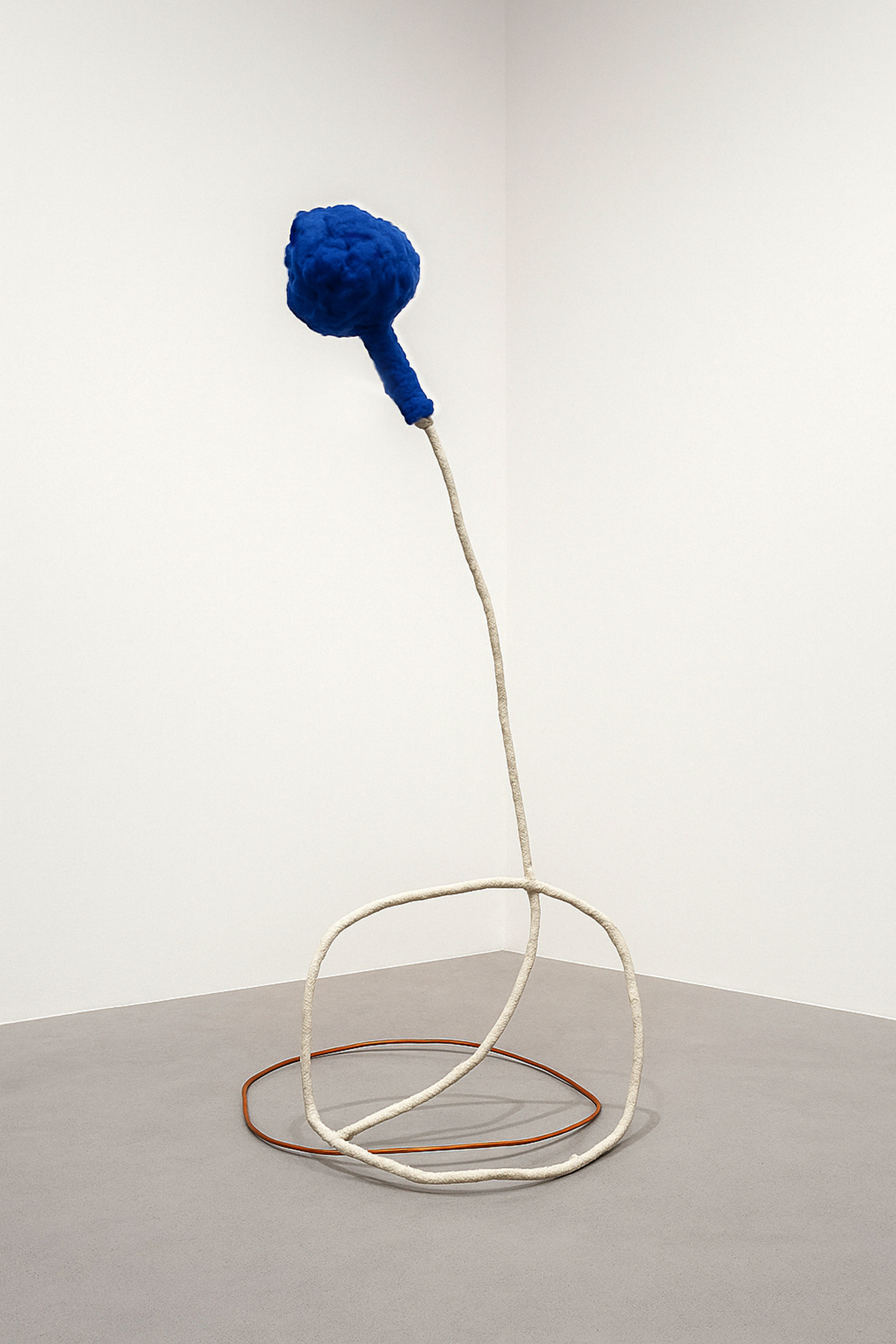Yu Jihye
Uppercut, 2022
Mixed media
200 x 180 x 100 cm
Unique work
Certificate of authenticity included
US$2,100
Show your appreciation with a like
Purchasing opens early August 2025. Be the first to know!
Want a reminder? Join our mailing list.
About the work
- Materials
- Mixed media
- Dimensions
- 200 x 180 x 100 cm
- Frame
- Frame not included
- Signature
- Unsigned.
- Certificate Of Authenticity
- Certificate included
Yu Jihye’s sculptural work Uppercut captures the sudden surge of an emotion long buried—a memory that strikes without warning, like a silent punch from within. It is not a blow delivered in anger, but a visceral jolt: an image, a scent, a sound—an uninvited visitor from the past. The tangled base loops like nerves or memory paths, winding and unstable, leading upward in a single tense thrust. At the top, a dense, electric blue form hovers like a clenched thought, a knot of emotion, or the core of a sensation that can no longer be contained. Made of soft, lightweight material, the form suggests that this punch is not physical, but psychological. It is a metaphor for the moment when something long-suppressed rises and hits—not with force, but with clarity. This is not an attack, but a release; not a rupture, but a return. Uppercut is the embodied trace of emotional whiplash. It speaks to the invisible tension between past and present, between knowing and remembering. Like a sudden catch in the breath, it reminds us that memory is not linear—it moves in loops, it strikes from below, and sometimes, it lands when we least expect it.
About the artist
Yu Jihye is an artist based in Daejeon, South Korea, whose work begins with an exploration of the sensory and contradictory state that exists before form and meaning fully emerge. Her practice often stems from the materiality of substances and the residual traces of sensation that surround them. She carefully selects organic and imperfect materials such as cotton, paper pulp, and fabric, and sensitively perceives and experiments with their physical and tactile properties. The loosely entangled texture of cotton appears both alive and lifeless, while the hardened forms of paper pulp suggest bodily movements through soft curves or twisted lines. In this way, opposing qualities—softness and strength, vitality and lifelessness—collide and intersect in her work, ultimately forming a new kind of harmony. Rather than suppressing these contradictions, Yu embraces them as a source of life force. The surfaces of her works often appear worn down or partially erased, like the remains of memory, evoking sensations that are neither fully narrated nor restored. Instead of depicting memory as a coherent narrative, she focuses on how it drifts through the body and the senses, how it resurfaces, and how it reorganizes itself into a new sensory order. Her exploration of “contradictory harmony” and the “potential for new vitality” metaphorically reflects the hybrid and artificial nature of contemporary life, revealing complex layers of perception beyond any singular message. These broken or reassembled structures reveal gaps and collisions, yet remain vividly alive—like internal movements refusing to be still. In this way, her work affirms suppressed impulses and embraces chaos, reflecting an artistic stance that generates renewed vitality from the residues of sensation.
